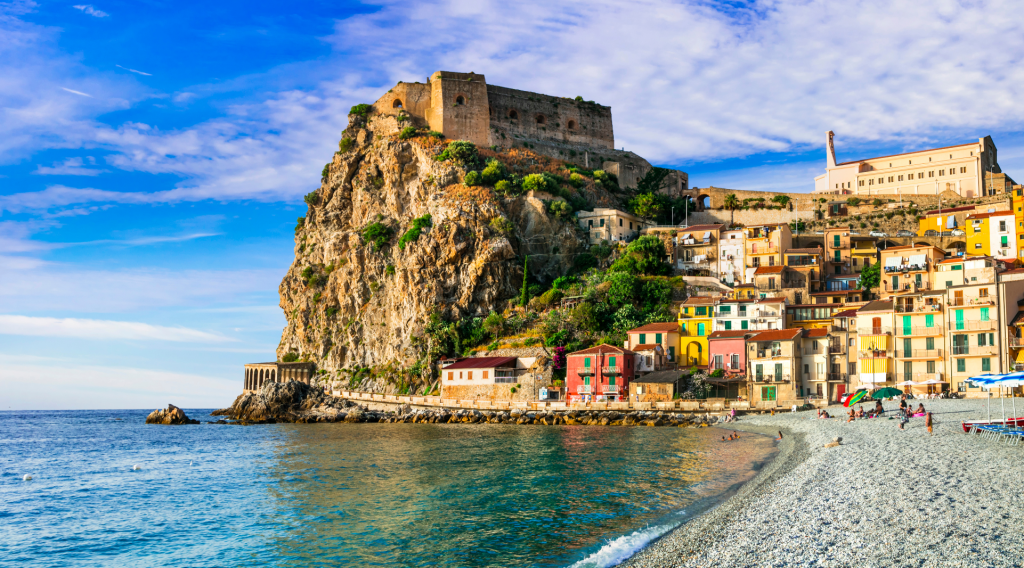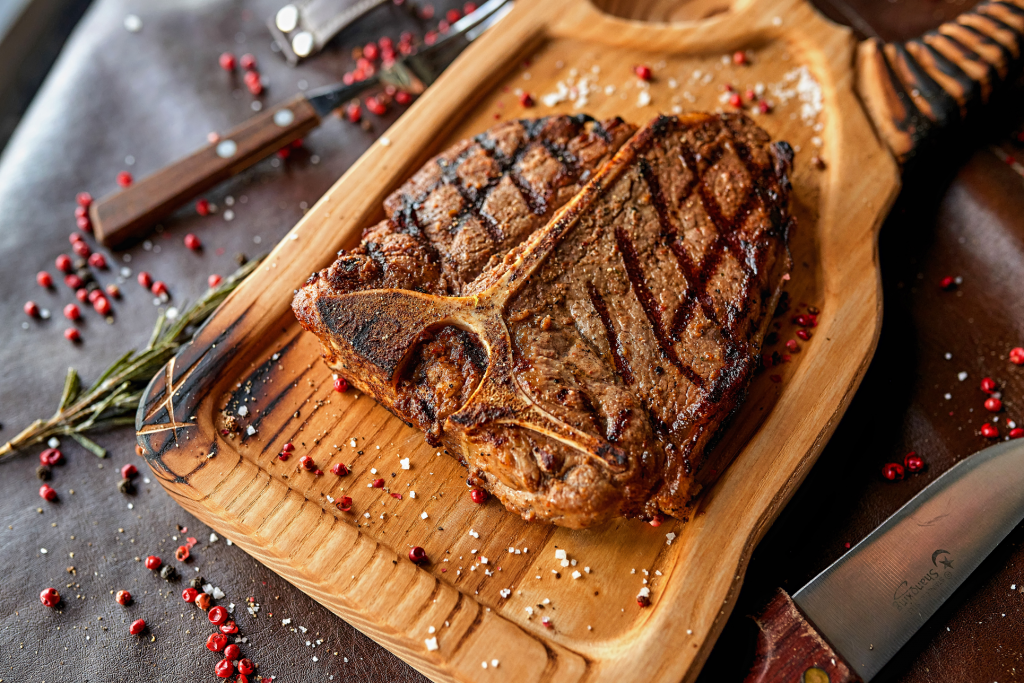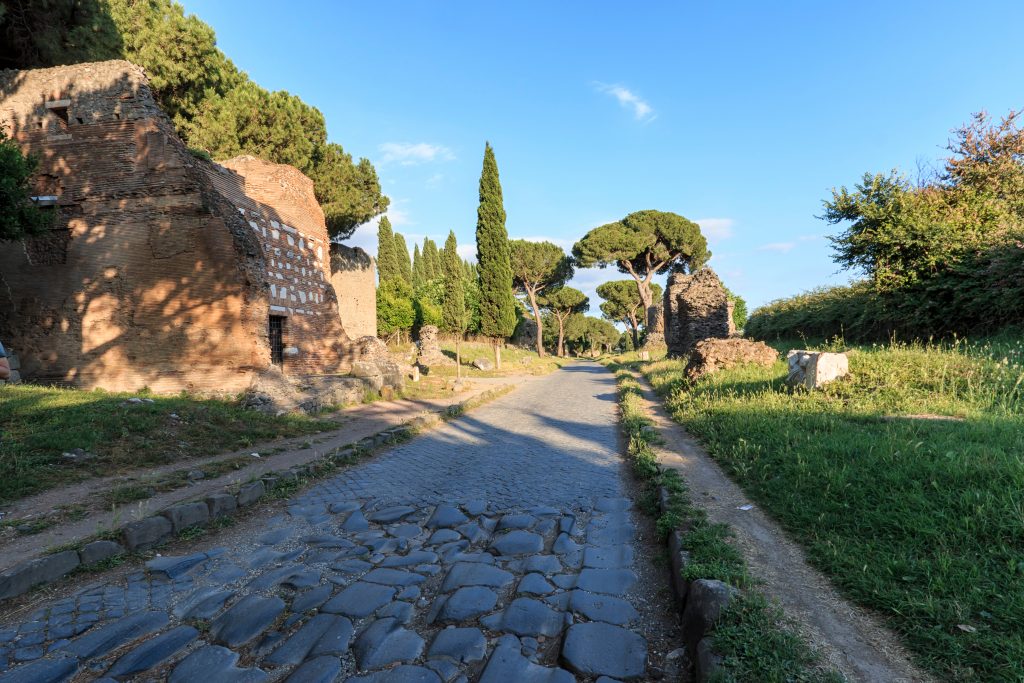All of Italy

Step into legends with DMC Italy with Class, who takes us on a ride through legend and lore in the beach town of Scilla.
What’s so special about this seaside town?
Steeped in historical and mythological tradition, the hilltop town of Scilla is one of Southern Italy’s most idyllic attractions. According to Greek mythology, it derives its name from the nymph Scylla, whose love affair with the scaly sea-god Glaucus incurred the wrath of the jealous nymph, Circe. Circe cast a spell on Scylla, transforming her from a beautiful nymph into a hideous, multi–headed monster. Gruesome to behold, Scylla retreated from the world, taking refuge within a rock. She would emerge only to feast on passing sailors, as she did in Homer’s Odyssey.
The legend’s warning to sailors may well have been based around the deadly currents around the strait of Messina. Local legend holds that the rock of Scilla, upon which an 11th Century castle still stands, was where the ancient monster lurked.
How do visitors best enjoy the town today?
There’s nothing sinister about the modern settlement. Scilla’s beachfront lined with pastel houses has something for everyone. Because the town has a pebble beach, its pristine waters are exceptionally clear. During the summer months locals and tourists pass their time swimming, sun worshipping, or snacking at one of the many quality restaurants or trattorie sprinkled through the town and beachfront.
One dish you must try is the typical panino con il pescespada – a swordfish sandwich. In fact, if you look out to sea where the Tyrrhenian and Ionian seas meet on a clear day, you’ll see the waters teeming with small fishing boats that stock Scilla’s restaurants with this culinary specialty. For those wishing to venture out further (and deeper, for that matter), Scilla Diving Center offers a wide selection of expeditions ranging from rusting shipwrecks to enchanting reefs.
For more information about Italy with Class, click here.

Luxury DMC Italy with Class gives us an insider’s tip on where to score an authentic bistecca alla Fiorentina or ‘Florentine steak,’ from the revered white Chianina cows of Tuscany.
Tell us about the meat-loving cuisine in Florence.
The Tuscan diet is unapologetically carnivorous. In Florence they have a saying – chi non carneggia, non festeggia – “those who don’t eat meat don’t know how to celebrate.” Bold, brash, and red-blooded, it speaks volumes of a city which places lampredotto (the fourth and final layer of a cow’s stomach) and bistecca (steak) at the center of its culinary culture.
Florence has no shortage of restaurants serving up bistecca alla Fiorentina, but as the city is such a popular tourist destination, some places offer a more authentic, local, sumptuous experience than others.
Where do you go to dig into a real bistecca?
We love Trattoria Mario near the Central Market in the San Lorenzo district. You can’t make reservations over the phone, you have to turn up and wait, but it is well worth it. The surroundings are cozy, intimate and traditionally Florentine, with memorabilia from the Fiorentina football team adorning almost every wall. The service is fast and friendly, the steak tender and succulent, and you get to choose which cut you’d like before placing your order.
Another great place to go is Trattoria Da Que Ganzi in the Sant’Ambrogio district: the owner, Domenico, goes out of his way to recommend the right wine to accompany your meal. His menu offers variety and versatility, though an easy order would start with the tagliere “dei Ganzi” to share before moving on to the bistecca.
Sharing really is caring when it comes to the bistecca alla Fiorentina – not just because of their size, but because there’s something about feasting on a chunk of red meat with someone else that runs deep in locals’ anthropological makeup. But if nobody’s willing to go twos with you, don’t panic. Da Que Ganzi also offers the smaller tagliata di manzo ai carboni (sliced beef cooked on coals) for one, or filetto di manzo ai carboni (fillet steak cooked on coals). Don’t miss out on their dolci either. They’re molto, molto buoni.
For more information about Italy with Class, click here.

Marilena Barberi of DMC Italy with Class offers an alternative route for your Roman holiday: cycling down the fabled Appian Way.
Of all the treasures in Rome, what makes this so special?
Venturing down the Old Appian Way is Rome’s most rewarding outdoors experience. Built in the 4th Century BC, this consular road ran from Rome’s city walls to Brindisi in the south. Because burial within the ancient city was forbidden, the road was gradually lined with tombs, becoming prime post-mortem real estate for ancient Rome’s rich and famous.
Cycling down the Via Appia Antica today, you feel like you have been transported back in time 2,000 years. The scenery is simply breathtaking: open fields stretch out towards the hills in the distance, tombs and villas line its cobbled stones, and, if you pick the right day, you will encounter an entirely different form of Roman traffic in the form of the Appian Way’s hundreds of wild goats.
When is the best time for newcomers to visit?
Sunday is the best day for a cycle down the Appian Way. Apart from locals going bike-riding, jogging, or dog-walking, you’ll have the ancient road entirely to yourself. Its umbrella pines and cypress trees provide ample shade from the Italian sun, and the many villas and ruins along the way offer a seductive refuge for a picnic lunch.
If you venture just a little further down the Via Appia Antica, your fatigue will be rewarded when you reach La Fattoria di Fiorano. Owned by the Antinori and Boncompagni Ludovisi families, this quaint farmstead is an idyllic rural retreat for an indulgent country lunch. Everything is sourced directly from the estate, and its Fiorano wine, produced in its fertile vineyards, has been awarded as the best wine in the region.
Do you have any special related memories?
The first time I visited La Fattoria di Fiorano was in October this year. They happened to be hosting a harvest event: “Fiorano for Kids,” in which children pick the grapes and learn about country life. The event culminated in a delicious rustic lunch prepared by one of Rome’s foremost Michelin chefs, and all proceeds were donated to the children’s hospital “Bambin Gesu.”
For more information about Italy with Class, click here.

Gastronomic Storytelling: Sicilian cuisine is among Italy’s most intriguing. Situated at the crossroads of conquering Medittaranean, African, and Arabic cultures, the island is a veritable melting pot of Mediterranean flavours. Every corner of Sicily offers something special characterising its unique gastronomy. In Ragusa, in the southeast, you’ll find “impanate” which are similar to the Spanish ‘empanadas’ because this was where the Spanish ruled from the 17th to the 18th centuries. Likewise, in Modica you’ll discover chocolate made the same way as the Aztecs used to make it – brought here to Sicily by the Spanish. In Trapani, in the Northwest, you’ll find a range of recipes reflecting the Arab conquest of the region from the 12th to the 14th centuries. The region’s restaurants serve up a fish cous cous originating from the Magreb regions, candid fruit and flowered ricotta cheese, coming from the eastern Mediterranean, and Sicily’s famous arancini – fried rice balls born out of the “joint-venture” of the Muslim and Norman tradition in Palermo.
Best Enjoyed: Sampling Sicilian street-food in one of the island’s lively and colourful markets or indulging on traditional pastries are experiences no visitor should miss. In particular, true food-worshippers should make the pilgrimage to Maria Grammatico Pastry shop in Erice, a Medieval town right above Trapani. Here you’ll find divine “Genovesi” pastries full of warm vanilla custard, which are best enjoyed after walking up to the Norman Castle, enjoying its 360 degrees view, and listening to the traditional Sicilian songs coming from a local musician.
